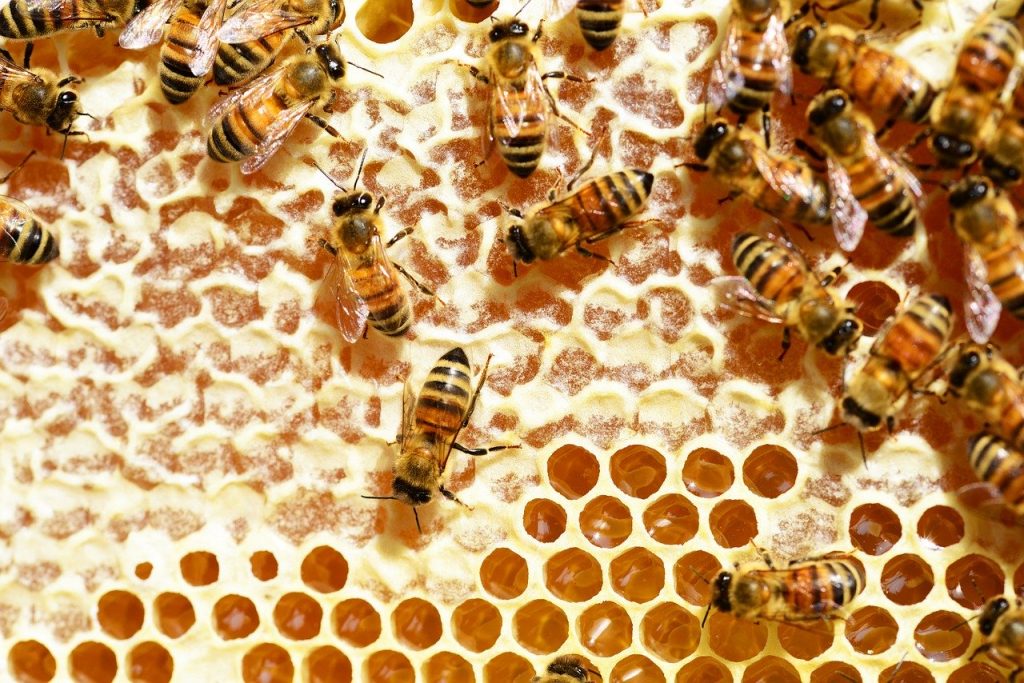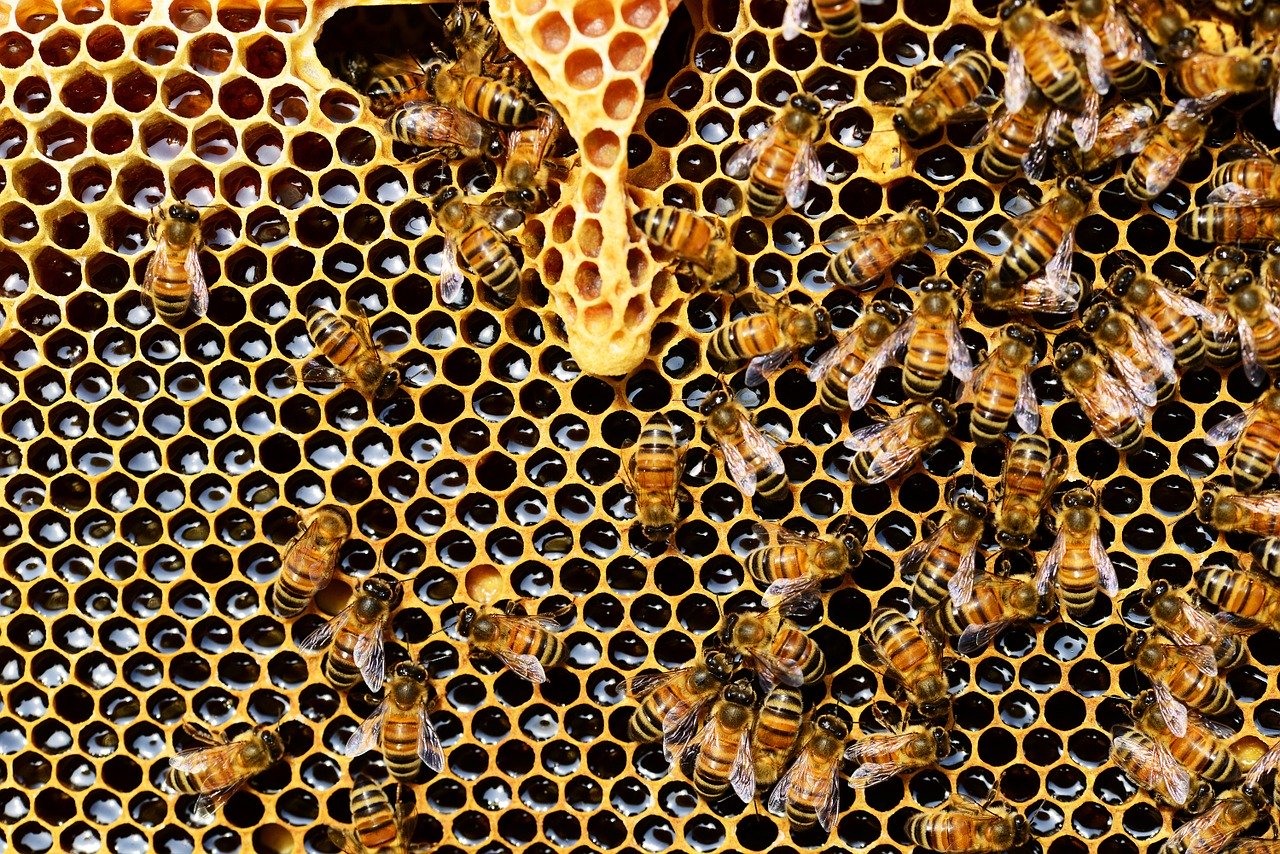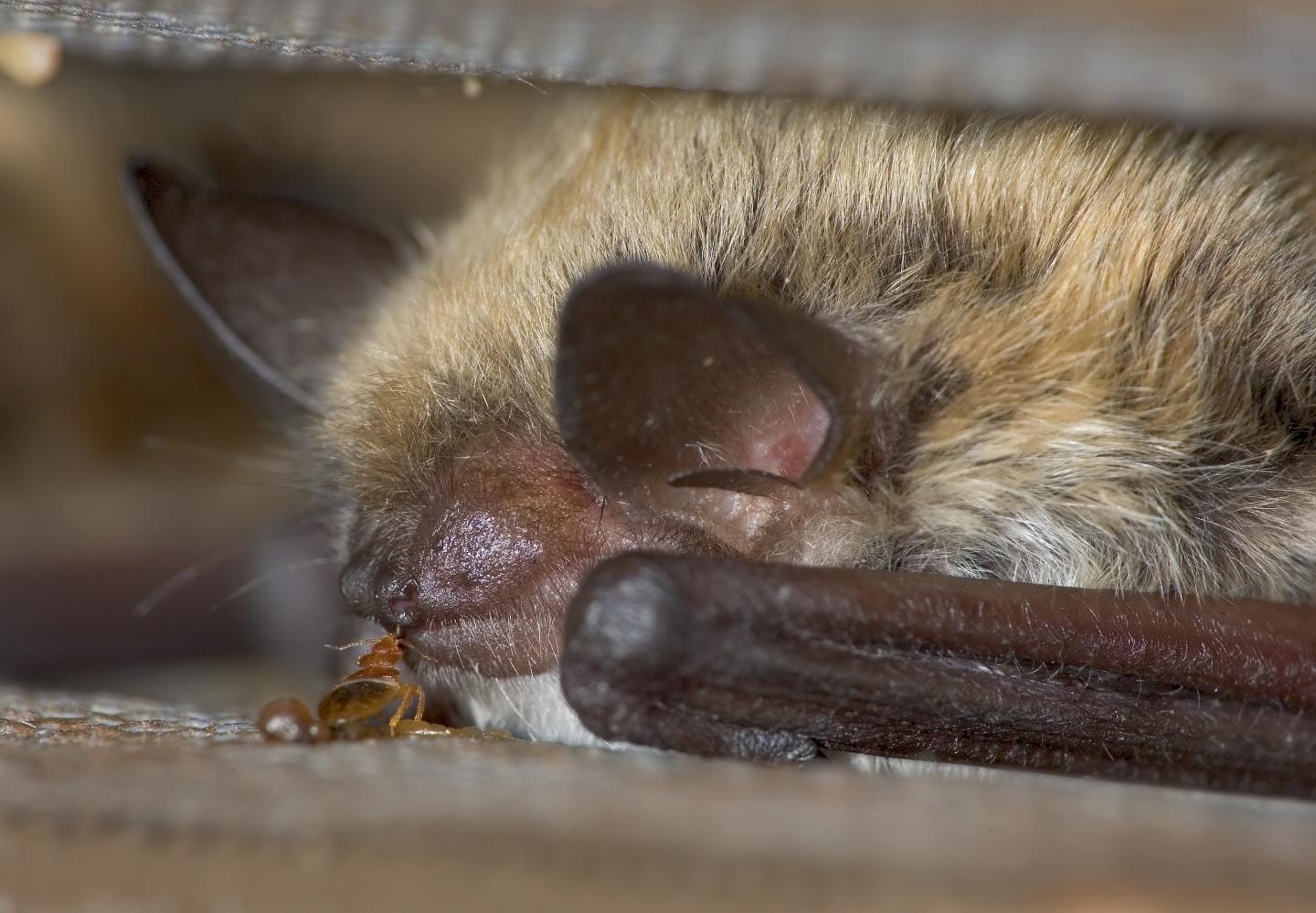- Bees won’t put in effort to produce wax, because wax is eight times more difficult to produce as compared to honey.
As humans, we burn wax all the time. In Denmark, each person burns around 6 kilos (13.2 pounds) of candle wax per year. These are mind-blowing numbers! This makes Denmark the top country that burns the most candles per person than any other country across Europe.
Unlike Denmark, bees know that it takes a lot of hard work to produce honey. For the production of eight pounds of wax, bees consume eight kilos of honey. For that reason, bee communities always strive to produce the least amount of wax possible.
Notice that evolution and Mother Nature has beautifully sorted out the answer to this question way before expert mathematicians and scientists: hexagons.

Bees prefer small-sized honeycombs than the larger ones because
they are harder to break and offer more protection.
Till now, we have understood that bees will fully optimize wax production and their genius capabilities of doing so.
But still, I did not understand why bees needed such small-sized honeycombs. Why can’t they simply create bigger holes and useless wax? After some careful research, I found out that it was all about making the structure more robust.
Bees, in every hive, start building a honeycomb from the top to the bottom section. As soon as the cell is filled with honey, they seal it using beeswax. This is the honeycomb construction process.
Now, imagine that you have started filling these combs with pure honey, one by one. Let’s suppose you build large cells instead of the smaller ones. The honey inside every honeycomb will either:
A. Become heavy for the surrounding beeswax.
This will finally lead to the breakage of the entire structure, and all the hard work would go to waste.
B. Will leak.
Bees go on a large number of trips to fill a single honeycomb with pure honey. Sometimes, it even takes days and days to seal one comb. What truly makes the honey stay inside the comb is viscosity and friction. If the comb is too large, the honey will leakout of the comb and drop out of it. Therefore, they choose small-sized combs.
What lessons do bees give to product owners?
No bee can build a comb all alone by itself. The same goes for Product Owners, Designers, Managers, Developers, and so on. Remember, it takes a determined team to build great products that will sell. The following are the three great insights that teach us some valuable lessons which we can apply when working together in teams:
- Work with logic and prioritize the usage of statistics instead of your sentiments. Prioritization is an essential professional skill that every team member should learn before working as a team. Often, we have a lot to do in a little time. Prioritization becomes essential. Unfortunately, many of us do not do it the right way. It is often seen that bees can compare distances, numbers, pollen amounts, and efforts. They make trade-offs based on substantial numbers instead of sentiments. Their calculations are precise and quantitative. As more and more workload piles up on our desks, we often shift to prioritizing sentiment and gut-feeling instead of customer interviews and surveys. We must learn something from these genius insects and keep using the feedback from our customers to create honeycomb-like products.
- Be energy efficient and resourceful. It is now proven that hexagon uses less energy and resources than any other shape. What if a whole existing product is way more efficient than building every software piece one by one? What if buying existing products or reusing them is way better than creating brand new ones from scratch? One must try not to spend his time and energy on one work that is primarily low impact. One must try answering the ‘How’ before the ‘What’.
- Do not go “All in!” for growth is a slow but steady process. We have studied in part 3 (above) that honeybees do not go all in to grow their honeycomb from scratch every time. Instead, they keep on expanding their existing hive according to their needs for the growing population and food storage. This shows clearly that natural systems grow in a connected, efficient way with support systems developing gradually with time. This “agile” or “just in time” approach makes sure that bees never build something they do not currently feel the need of. This way, they never face the depletion of their energy resources.
The same example applies to the products our teams build and design by crafting. Youdo not need to have error-free, flawless work from day one. It doesn’t need all the perfect designs and user stories and reviews you’ve dreamed about in your mind. Instead, your work must allow you to iterate and learn quickly while allowing you to expand your team when suitable.
One more thing that is very interesting to note is that hexagons are not limited to bees only. Hexagonal shapes can be spotted on animals like giraffes, on the back of turtles’ shells, in the eyes of many insects, etc. This can be explained with the help of the same logic, as discussed above: Nature is all about utility, rare ability, and efficiency to form itself almost inadvertently.
It is my personal belief that human beings can also learn and inspire from the hexagonal shapes found in nature. By using the lessons drawn from bees and their work strategies in our everyday work, we can attain high levels of efficiency, customer satisfaction, and success.










